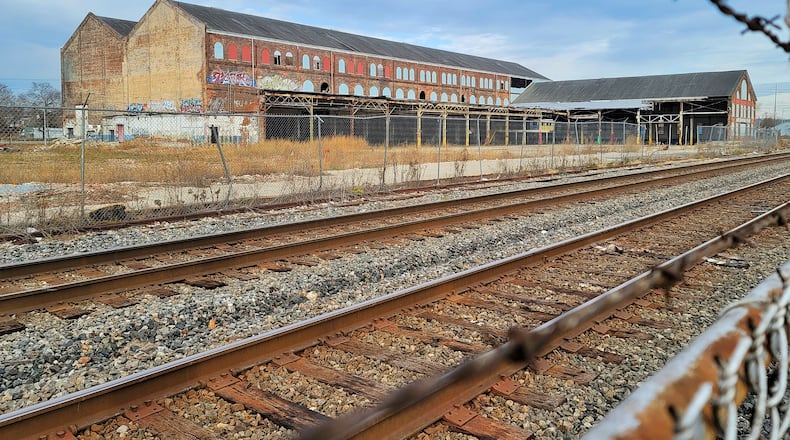President Joe Biden signed the $1.9 trillion American Rescue Plan Act into law March 11, 2021 and it allocated $350 billion to help local governments with pains caused by the coronavirus pandemic.
Rather than use the money solely for county operations or projects, the commissioners invited other jurisdictions and organizations to pitch projects that could make “transformational” changes in the county.
They received an eclectic array of funding requests totaling nearly $148 million, including economic development projects, help for the homeless, propping up small businesses, park and bike trail expansion and a new county morgue to name a few. They range in price from $24 million for new advanced aviation and manufacturing training centers in Middletown and Hamilton to $125,000 for healthcare worker training.
When will the commissioners decide?
County Administrator Judi Boyko provided the board an interactive spreadsheet so they could revisit the presentations and make their individual picks. She said the commissioners have shared their picks with her and are in agreement on some.
“There are several projects which the board unanimously supports, even more with majority consensus, and others which only one Commissioner supports or which the award amount differs,” Boyko said. “I hope to receive direction soon to be able to share publicly these findings.”
After the federal windfall was announced, Commissioner Cindy Carpenter began canvassing the county, listening to the wants and needs of communities and groups. She recently released her plan for ARPA and other funding sources totaling $98 million, including almost $20 million from the general fund and some other COVID-19 resources the county received.
For the rescue funds, she allocated the following: education and workforce transformation ($20 million); completing the Great Miami River Trail ($8.5 million); broadband ($10 million); community centers ($9.5 million); park system expansion ($4.5 million); small business support ($3.25 million); water projects ($11.1 million); public health ($2.2 million) and neighborhood projects ($5.2 million).
Commissioner Don Dixon told the Journal-News none of the proposals standing alone “hit the mark” in terms of transformational investments to make the county better. They heard requests for new educational opportunities from Butler Tech and Miami University and all three commissioners say they have merit.
There is a $10 million ask by Miami University to create an innovation and workforce development center and a $24 million request from Butler Tech to create a workforce pipeline to advanced aviation and manufacturing jobs.
Dixon said there must be a wholistic approach, ongoing expenses must covered and outcomes — namely the students who get the training and education actually get and keep jobs — must be tracked.
“There’s a million things they need to put together on that deal and we’ve got until 2026, somebody was smart enough to figure out it’s going to take a while to do that, so we’re on schedule...,” Dixon said. “We never received one plan from the very beginning that was detailed enough that you knew who, what, where when and how it’s going to work. It was all just well we’re going to build a building and we’re going to put some stuff in it.”
Another area Dixon said they all apparently agree on — and one that was specifically allowed when the federal rules were first released — was providing broadband countywide. Carpenter allocated $10 million for that endeavor.
“The pandemic will have an indelible effect of how schools, businesses and societies use the internet,” Carpenter wrote in her presentation. “It is imperative that we take this once in a lifetime opportunity to extend our broadband network and ensure that no one is left behind.”
Governments can replace revenue lost up to $10 million due to the pandemic, respond to health and economic impacts of the pandemic, and invest in water, sewer and broadband, among other things. Funds must be obligated by December 31, 2024, and expended by December 31, 2026.
Jon Honeck, senior policy analyst with the County Commissioners Association of Ohio, said the 87 counties across the state are in the same boat as Butler still trying to figure out the best use of the funds. Unlike most federal grants, ARPA isn’t tailored to a single use.
“With ARPA they’ve got rules they have to follow, but they’ve got a lot of different options and in a sense that makes it more difficult,” Honeck said. “Because you’ve got a bunch of different options and you’ve got to weigh all these alternatives and be able to justify them.”
What about other communities?
Hamilton received the second largest pot of money, collecting $33.6 million over two years. A third of the money is slated for a new criminal justice center to be located near the county jail.
Hamilton Finance Director Dave Jones said they are going to park $7 million in a dedicated account for five years to help pay for the North Hamilton Crossing and $4 million will build a new fire station; $2.2 million is going for storm water repairs, $1.5 million will be used to buy the Beckett Paper site; $1.2 million for South B Street paving and infrastructure and some smaller projects.
City Manager Joshua Smith said the city council directed the project list and in addition to addressing the city’s own needs wanted to pave the way for economic development, like the Beckett Paper purchase “that can be adaptively reused for job creation and modern housing.”
“City council prioritized the American Rescue Plan funds in three broad buckets - public safety, infrastructure, and catalytic investments...,” Smith said. “Council was insistent the funding not be used for operations, since it is one-time money.”
Last summer Middletown identified 28 potential projects to be funded with their $19 million allocation including $7.7 million for Riverfront redevelopment; $3.4 million for Towne Mall redevelopment and $2.1 million for a new community center. These were under the direction of former City Manager Jim Palenick.
“With the addition of two new council members last fall who bring new perspectives to the table, a revision of the proposal will likely be provided in the near future,” spokeswoman Missy Knight said. “At this time, city administrators are refining the document with updated spending information for the ARPA money that will benefit the city and residents.
The city has spent some of the money already, using $815,000 to upgrade street lights with LED bulbs; $119,808 for premium pay for some of their union workers and $224,000 for the Middletown Visitors Bureau.
The county’s largest township West Chester has allocated all of its $6.6 million for aging stormwater infrastructure repairs and replacement. The trustees already spent $42,224 and encumbered $973,100 for projects this year. Trustee Ann Becker said it was a good use of the ARP funds. She said it isn’t “fancy” and nothing people will post on Instagram — unless storm sewers back up — but it is necessary.
“I think the use of this American Rescue Plan money to shore up our storm pipes is a good use of this money,” Becker said. “I still question whether or not this money should be handed out as freely as it is, I understand the thought behind it is a little frustrating but we’re using it in the right way.”
Likewise Liberty Twp. trustees have decided to put their money into repairing roads. Trustee Board President Tom Farrell said they will definitely use $3 million on roads and reserve the final $1 million in case other needs arise. He said they grew so quickly their streets are aging at the same time.
“The best place we believe to put it is into the road fund which will have a deficit if we don’t do that,” Farrell said. “That coupled with the increase in cost of road repair at this point due to COVID there’s been a significant increase in labor and road repair, way above what we had budgeted so this gives us the opportunity to continue serving our residents.”
Fairfield hasn’t made any concrete decisions but have identified general categories for spending their $4.4 million. The largest spend will be $2.3 million on facilities and equipment. A recent presentation to council lists a new fire truck and ambulance, new audio and visual equipment for council chambers, updating HVAC and security and exploring alternative energy opportunities to name a few.
They have identified $1.4 million for redevelopment — especially the Ohio 4 corridor — and possibly some neighborhood grants. and some sanitary sewer work. Another $750,000 is earmarked for quality of life projects like park improvements.
“At this time, the presentation was suggested areas to spend,” City Manager Scott Timmer said. “No legislation has been approved.”
Oxford was allocated $2.4 million and has spent $483,097, including $6,444 in gift cards for staff to encourage them to get vaccinated; $200,000 to finish ADA curb installation and $113,000 to assist with infrastructure for the Miami University project the commissioners have been asked to support.
“We anticipate that our remaining funds will be directed toward affordable housing and economic development efforts,” Assistant City Manager Jessica Greene said. “We are formalizing our final recommendations to council for the remaining $1.9M and we anticipate making final determinations this summer.”
Hanover Twp. Administrator Bruce Henry said they are also still identifying projects but the $896,386 will only go so far.
“So far only premium pay for essential workers during the pandemic period has been paid out of these funds,” Henry said. “We have 19 potential projects which far exceeds the funding available. We are still working on priorities.”
There are concerns about changing federal rules
Just like the $43.7 million in CARES money the county as a whole received, several communities are still struggling with making sure they don’t spend the money on anything the Treasury won’t allow. Ross Twp. Fiscal Officer Julie Joyce Smith said they have allocated their entire pot of $874,671 in the revenue loss category while they mull eligible projects.
“Unfortunately, Treasury has not provided an easy-to-follow process guide for spending. Things are being rolled out and defined as they go. It is my belief that everyone is trying to do their due diligence so that everyone is in good position when these dollars are actually expended,” she said. “It kind of comes back to that old adage, it’s not what you know...it’s what you don’t know is what should scare you.”
St. Clair Twp. Fiscal Officer Doug Wheelright agreed, that’s why they are waiting for more clarification before spending their $488,663. He said he is still waiting for his audit to see if the township spent the CARES money within bounds, because the rules for all this federal money have shifted so many times.
“Because this is all basically a windfall it would devastate your budget if you had to give it back,” Wheelright said.
Several other entities — including Fairfield Twp. where trustees have nearly $2.4 million to spend — are still mulling their options.
About the Author

